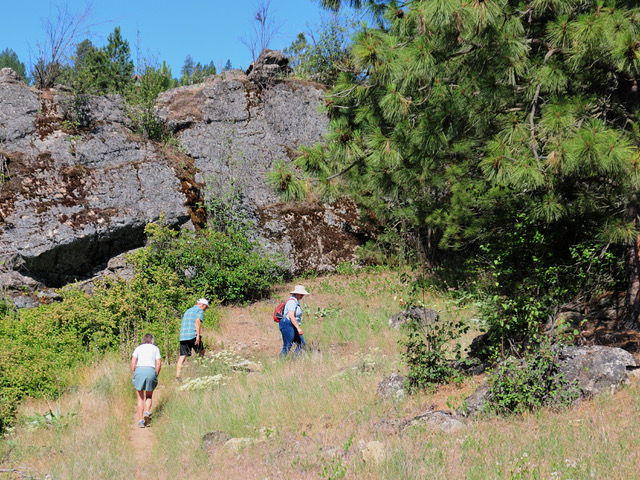I’M REMINDED OF HOW much fun riding a tandem bicycle is every time I see a couple riding one. It’s like synchronized strolling through the park or synchronized running on a road, which is essentially the best thing about a tandem—you ride together. But riding a tandem does not come without some cautions. When my wife and I got our bike twelve years ago, the owner of the local bike shop referred to it as a marriage validation device. It didn’t take very many mistakes on my part for me to understand why.
“READY FOR YOU TO GET ON.”
Tandem riders consist of a team: the captain and the stoker. The captain not only pedals but also is responsible for steering, gear selection, braking and keeping the bike upright when it’s stopped. The stoker—the namesake of those who tended to steam locomotives many years ago—is responsible for supplying power. The captain sees the path ahead while the stoker sees the captain’s backside. The captain has complete control and must earn the stoker’s trust. The stoker relinquishes control and can thump the captain’s back when the captain makes a bone-jarring mistake. Yes, it’s quite likely I’m speaking from personal experience.
“SLOWING.”
The key to riding a tandem is effective communication. The captain must tell the stoker what is going on and give the stoker enough time to prepare for what the captain is about to do. The unexpected makes riding a tandem unpleasant for the stoker. And if the stoker is not happy then the fun of riding a tandem is over. For example—and this is a critical one—if you’re riding a single bike and you’re approaching a speed bump, what do you do? Most people stop pedaling just before the bump and raise their seat off the saddle so the bump doesn’t jar them. Once over the bump they sit back down and resume pedaling. This technique works just as well on a tandem, but consider it from a stoker’s perspective if the captain forgets about her.
“RIGHT TURN.”
You’re riding along and enjoying the warm sunny day when suddenly the captain stops pedaling. Since your pedals are connected with a synchronized chain, the leg that was just pushing down meets sudden, unexpected resistance. Your legs have jarred to a stop and you barely have time to think, “What the…?”, when the rear wheel passes over the bump. Bam! With your legs frozen in mid-stroke and your full weight on the saddle, the bump propels the saddle upwards connecting to your backside with the force of a batter who was given the sign to swing away. Ouch! Do that one too many times and the captain’s kidneys suffer retaliatory blows from the stoker’s fists and it’s time to put the bike away.
“SITTING UP TO TAKE PICTURES.”
That example alone should be enough to clue you in on the necessity for effective communication. There are common commands or you can make up your own, but the point is you must work them out together and ensure you have a common understanding. Taking the speed bump example, when I see a bump or pothole that I can’t avoid, I give my stoker the warning, “Bump!” Once I give the warning, we pedal one complete revolution before we stop and raise our backsides off the saddles. That last bit of pedaling gives my stoker enough time to process my warning and prepare to stop pedaling. In order to give the warning in enough time I have to keep a close eye on the road ahead. My stoker trusts me to either avoid bumps and potholes or give ample warning about them. My stoker is my wife of nearly 32 years so it’s understandable why my communication skills are so well developed. She has trained me well. And I value my kidneys.
“STOPPING.”
The stoker has responsibilities, too. The stoker pedals. The stoker can sight see and take pictures of the scenery. (Don’t forget to tell your captain your hands are off the bars.) The stoker stays upright and centered, because leaning to one side or the other throws the bike off balance and makes the captain unhappy. The stoker does not get on or off the bike until the captain says she’s ready for you to do so.
“COAST.”
A tandem is great for riders with different strengths who want to ride together, which was the reason my wife and I got the bike in the first place. The tandem bike is also great for allowing children and disabled people to enjoy riding. If you’d like to learn more about tandem riding, I recommend reading the late Sheldon Brown’s web page on the topic (http://sheldonbrown.com/tandem.html).
“SHIFTING DOWN.”
Just because you have two engines, it doesn’t mean you have to go fast on a tandem. There is something to be said for those slow pleasure cruises through the neighborhood. By the way, a good opportunity for that is coming up with two events in June for Summer Parkways. (Go to summerparkways.com for details.)
“READY, GO!”













